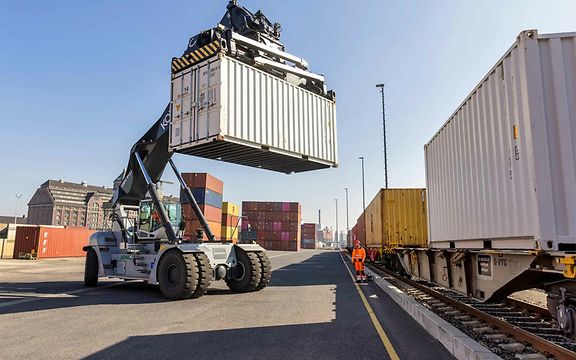Double-tracking and electrification
Until now, the route between Munich and Freilassing via Mühldorf has been largely single-track and unelectrified. The same goes for the branch from Tüssling to Burghausen. In order to meet current needs and, in particular, future ones, we are installing electric overhead lines on a 145 km section of this route. A total of 103 km will be upgraded to double track between Markt Schwaben and Ampfing and between Tüssling and Freilassing. Once complete, the upgrade will increase the line speed from its current maximum of 120–140 km/h to 200 km/h.
Railway stations, technology and more structures
DB will also renovate and upgrade stations to cutting-edge standards, and most of them will be barrier-free to make travelling easier for passengers with limited mobility. Modern control-command and signalling equipment and an increased number of signal blocks will translate into shorter intervals between trains. In turn, this will improve the overall quality and quantity of services for passengers travelling to and from the region.
All in all, the line upgrade will involve renovating or rebuilding 166 bridges, 23 level crossings and 19 railway stations. To provide superior protection from train noise to residents near the route, we will also implement active and passive noise-control measures at select locations to meet the legal requirements.
Completed and ongoing subprojects
Several projects have already been successfully concluded: the bypass around Berg am Laim has been completed, as has the installation of ESTW electronic interlockings in Dorfen and Altötting. The route section between Ampfing and Altmühldorf has been upgraded to double track. The new double-track section between Altmühldorf and Tüssling entered into service in December 2017. Active noise-control measures (in this case, noise barriers) were erected in Ampfing and Tüssling.
In December 2017, a third track entered service in Freilassing. Also in Freilassing, three railway bridges were widened and modified, and extensive work took place on the tracks, overhead lines and signals. A single-track bridge was constructed to supplement the existing bridge with listed status over the Saalach river.
Munich rail hub
In connection with line upgrade 38, DB is performing additional closely related work in the Greater Munich region. To improve connections to Munich Airport, DB Netz AG is moving forward with the Erding ring closure project, which will provide access to the airport from Erding. It is also upgrading the line to Markt Schwaben and building a new connecting link near Walpertskirchen. East of Munich, freight trains running from Rosenheim and the Brenner Pass will be able to travel directly to Mühldorf via the Truderinger curve without any detours around Munich or changes of direction at Munich East marshalling yard. Since it was put into service in December 2018, a new curve near Neufahrn has provided a faster link for trains travelling westbound or northbound from Munich Airport en route to Freising.











